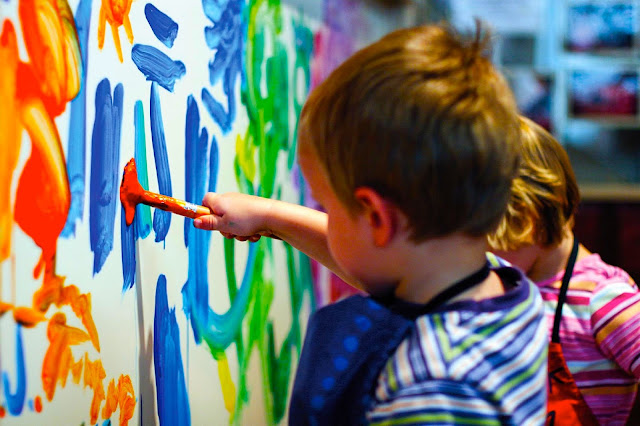Children love to play,
and play often mirrors what is important in their lives. Play can be quiet or
noisy, messy or orderly, funny or serious, strenuous or effortless. It can take
place inside or outside, play can be structured or unstructured and develops as children grow and change. Children play
for different reasons. Sometimes they are consolidating existing learning, practicing
a skill or they are exploring or learning new things. Play can also be a way of
building or strengthening a relationship. Children often play simply for fun
and enjoyment. They bring their own interpretations of situations, events,
experiences, and expectations to their play.
In my research for Early Years Worksheets
Hub, I came across a great resource from Learning and developing through play (Aistear: the Early Childhood Curriculum Framework)
and Bob Hughes, that explains different types of play.
CREATIVE PLAY
Creative play involves children exploring and using their bodies and materials to make and do things and to share their feelings, ideas and thoughts. They enjoy being creative by dancing, painting, playing with junk and recycled materials, working with play-dough and clay, and using their imaginations.
DRAMATIC PLAY
Play where children figure out roles to play, assign
them and then act them out.
SOCIO-DRAMATIC PLAY
When children act out
experiences, e.g., playing house, going to the shops or going to a restaurant.
SOCIAL PLAY
Any social or interactive situation where the
expectation is that everyone will follow the set rules - like during a game or
while making something together.
PHYSICAL OR LOCOMOTOR PLAY
Involves children
developing, practicing and refining bodily movements and control. It includes
whole body and limb movements, co-ordination and balance. These activities
involve physical movements for their own sake and enjoyment. Children gain control
over their gross motor skills first before refining their fine motor skills.
EXPLORATORY PLAY
Exploratory play involves
children using physical skills and their senses to find out what things feel
like and what can be done with them. Children explore their own bodies and then
they explore the things in their environment.
MANIPULATIVE PLAY
Manipulative play
involves practicing and refining motor skills. This type of play enhances
physical dexterity and hand-eye co-ordination. Over time children need to
experience a range of different levels of manipulation if they are to refine
their motor skills. This type of play includes manipulating objects and
materials.
IMPORTANCE OF PLAY
pediatrics.aappublications.org/
made an extensive research on importance of play to children and it includes
1. Play allows children to
use their creativity while developing their imagination, dexterity, and
physical, cognitive, and emotional strength.
2. Play is important to
healthy brain development. It is through play that children at a very early age
engage and interact in the world around them.
3. Play allows children to
create and explore a world they can master, conquering their fears while
practicing adult roles, sometimes in conjunction with other children or adult
caregivers.
4. As they master their
world, play helps children develop new competencies that lead to enhanced
confidence and the resiliency they will need to face future challenges.
5. Undirected play allows
children to learn how to work in groups, to share, to negotiate, to resolve
conflicts, and to learn self-advocacy skills.
6. When play is allowed to
be child driven, children practice decision-making skills, move at their own
pace, discover their own areas of interest, and ultimately engage fully in the
passions they wish to pursue.
7. Ideally, much of play
involves adults, but when play is controlled by adults, children acquiesce to
adult rules and concerns and lose some of the benefits play offers them,
particularly in developing creativity, leadership, and group skills.
8. In contrast to passive
entertainment, play builds active, healthy bodies. In fact, it has been
suggested that encouraging unstructured play may be an exceptional way to
increase physical activity levels in children, which is one important strategy
in the resolution of the obesity epidemic.
9. Perhaps above all, play
is a simple joy that is a cherished part of childhood.
10. Finally, parents and
caregivers need to also ply with children because when parents observe their
children in play or join with them in child-driven play, they are given a
unique opportunity to see the world from their child’s vantage point as the
child navigates a world perfectly created just to fit his or her needs. The
interactions that occur through play tell children that parents are fully
paying attention to them and help to build enduring relationships.
I will love to hear your feedback on this.
Thank you.






Great one
ReplyDelete